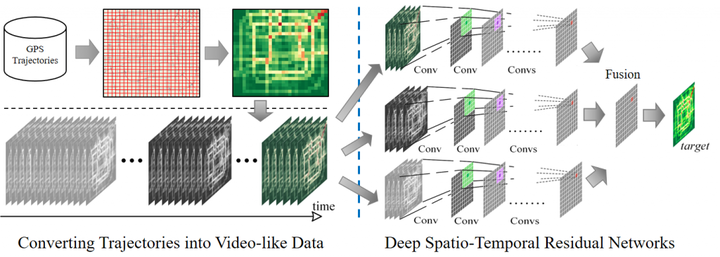Deep Spatio-Temporal Residual Networks for Citywide Crowd Flows Prediction

Abstract
Forecasting the flow of crowds is of great importance to traffic management and public safety, and very challenging as it is affected by many complex factors, such as inter-region traffic, events, and weather. We propose a deep-learning-based approach, called ST-ResNet, to collectively forecast the inflow and outflow of crowds in each and every region of a city. We design an end-to-end structure of ST-ResNet based on unique properties of spatio-temporal data. More specifically, we employ the residual neural network framework to model the temporal closeness, period, and trend properties of crowd traffic. For each property, we design a branch of residual convolutional units, each of which models the spatial properties of crowd traffic. ST-ResNet learns to dynamically aggregate the output of the three residual neural networks based on data, assigning different weights to different branches and regions. The aggregation is further combined with external factors, such as weather and day of the week, to predict the final traffic of crowds in each and every region. Experiments on two types of crowd flows in Beijing and New York City (NYC) demonstrate that the proposed ST-ResNet outperforms six well-known methods.